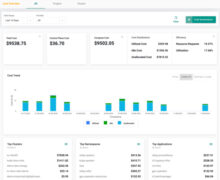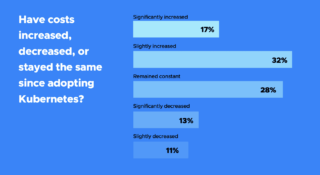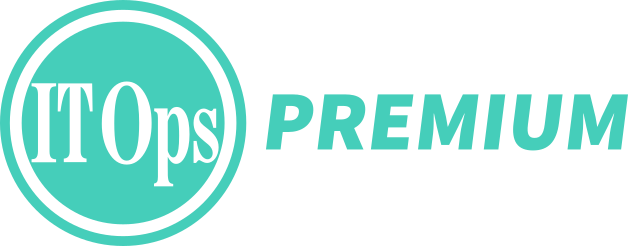Topic: finops
FinOps Foundation gains several new Premier Members
The FinOps Foundation has announced the addition of several new Premier Members, including American Express, NVIDIA, AMD, ServiceNow, and Snowflake. “American Express is a technology-powered enterprise that is focused on delivering increased scale and efficiency, improved speed to market, high quality, and security, while always keeping our customers at the center of all we do,” … continue reading
DoiT announces platform for automating FinOps actions
DoiT has announced a new offering to help IT teams reduce cloud costs through automation. DoiT CloudFlow is a no-code platform that automates FinOps-related actions, such as rightsizing or migrating workloads, scheduling resources, or tagging assets. According to the 2025 State of FinOps report from the FinOps Foundation, the average developer gets 10 new alerts … continue reading
Rafay Systems’ Cost Optimization Suite lowers cloud costs by analyzing resource usage to make changes
Rafay Systems has announced its new Cost Optimization Suite to help users lower their cloud computing and Kubernetes costs. The platform does this by continuously analyzing resource usage and reallocating or cleaning up resources as necessary based on policy-driven controls. For instance, users can set time-to-live limits for short term needs, so that resources are … continue reading
FinOps Foundation releases spec for uniform cloud billing
The FinOps Foundation today announced the availability of FOCUS – the FinOps Open Cost and Usage Specification – version 1, created to provide a uniform format for cloud billing across the different providers. The world’s top cloud providers – Google, Microsoft, Amazon and Oracle – have contributed to the development of the specification, which has … continue reading
Report: Gap between FinOps and DevOps/engineering teams widens
A new report reveals that as companies are building cultures of collaboration and alignment between FinOps and DevOps teams, there is a growing chasm between the teams as to responsibility for cloud costs. When FinOps drives business culture, project teams are responsible for their cloud usage, which allows organizations to align costs of product development … continue reading
DoiT launches new features to help companies improve FinOps posture
DoiT, which provides software to help simplify cloud setup, has announced new features in Cloud Navigator designed to enable better FinOps practices. Cloud Navigator is a tool that helps companies prevent cloud overspending by providing spending analytics, anomaly detection, and more. The company introduced the integration of Ava, which is a generative AI assistant that … continue reading
Kubecost 2.0 launched with Kubernetes network monitoring, cost center reporting, and more
The Kubecost 2.0 update brings new tools and features aimed at simplifying and improving the management of Kubernetes-related cloud costs, especially for large enterprises and in complex, multi-cloud settings. Kubecost is a cloud-agnostic tool for Kubernetes cost monitoring and visibility. According to a CNCF Cloud Native FinOps + Cloud Financial Management Microsurvey, issues like overprovisioning, … continue reading
Report: Kubernetes responsible for increasing cloud spend
Companies are spending more and more on cloud services thanks to Kubernetes. A recent microsurvey from the CNCF revealed that for 49% of companies, Kubernetes was responsible for increased cloud spend. The microsurvey was designed by the CNCF and OpenCost team and responses were gathered between June and November 2023, with just over 100 respondents … continue reading
ITOps Times Open-Source Project of the Week: FOCUS
The FinOps Cost and Usage Specification (FOCUS) provides consistency and standardization to cloud cost data. It helps companies visualize the value of cloud services and transforms complex billing data into a simple standardized schema. FOCUS simplifies multi-cloud billing data, enhances reporting consistency across various vendors, and streamlines FinOps capabilities such as allocation, chargeback, budgeting, forecasting, … continue reading
How IT leaders can get their cloud back in order
The evolution of cloud operations currently revolves around the offerings of the hyperscale cloud providers (hyperscalers). We should consider these “traditional cloud models,” and they typically offer decent value when organizations are just beginning their cloud journeys. But these plans tend to become extremely expensive once the organization starts scaling its cloud initiatives. According to … continue reading
IBM to acquire FinOps company Apptio for US$4.6 billion
To accelerate advancing its IT automation capabilities, IBM today announced that it has entered into a definitive agreement to purchase Apptio, makers of FinOps software, for $4.6 billion. In its announcement, IBM noted that organizations are facing more complexity with public and private clouds and numerous service providers, and are grappling to gain visibility into … continue reading
Flexera One FinOps helps to improve cost of enterprise collaboration
Flexera, a company that works to help organizations gain business value from their technology investments, today released Flexera One FinOps to strengthen an enterprise’s FinOps and cloud central teams. This release is intended to enhance the combination of IT asset management and FinOps in order to improve the way enterprises visualize and administer cloud usage … continue reading















